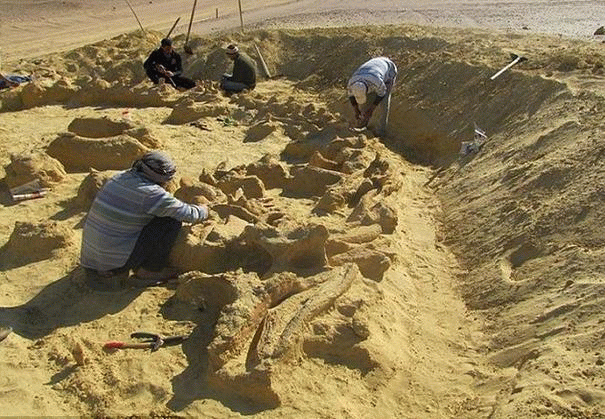In Egypt Paleontologists discovered a very old underwater version of a turducken. Scientists discovered the remains of a huge 40-million-year-old whale with an extra whale within. They discovered these fossils close to a group of shark teeth, signifying that sharks may have feast on this whale within a whale.
Egypt ministry of environment posted photos of discover on Face book, with explanation that the huge whale, known as the basilosaurus, might have eaten the smaller whale, or it could have been embryo.
However, basilosaurus had some pretty strange dining habits. Like today’s orcas, this violent and very old killer was famous to eat other whales, so the whale in may not have been an embryo so much as a food. National Geographic news that basilosaurus had such powerful jaws that it could mash the skull of any whale unlucky enough to get close to its mouth.
The fossil was found at Wadi al-Hitan, a UNESCO World tradition site also famous as “Whale Valley” situated in the desert to the southwest of Cairo.
The Cairo Post reported that the most recent discovery in Egypt shows that the 60-foot-long whale had eaten crabs and sawfish beside with perhaps that other whale. Because there were found shark teeth around the whale, scientists think it was finally eaten by sharks, almost certainly after it died.
Basilosaurus lived about 35 million years ago and was at first thinking to be a reptile because of its useful back limb. About 400 skeletons from reptiles and mammals have been recognized at this archaeological site, in what used to be a beach.
This recent find not only give way an exciting story, but according to the environment minister, the basilosaurus fossils found contain the smallest backbones of the tail, making it the only whole skeleton of its kind in the world.
The fossilized leftovers of at least 10 whales have been found at Whale Valley since it was first discovered in 1902. UNESCO says Whale Valley hold the remains of the long-dead suborder of whales known as Archaeoceti, which show the development of the whale from a ground-based animal into an ocean-going mammal.
Academy natural scientist Richard Harlan published some reports in the 1830s on the unfinished fossil leftovers of a huge creature. Harlan believed the animal’s huge backbones those belonging to Dead Sea reptiles that exist in in Europe.

